A large component of the Warhorse project is the analysis of horse bones from medieval archaeological sites across Britain. Zooarchaeology, the study of ancient animal remains, provides insight into the unique roles that animals held in the past, both as food but also more significantly as important companions critically linked to social and cultural practices. The bones of these animals can tell us about their physical appearance, health, age at death and lifestyle, all of which combine to help us better understand the use of horses in the medieval period, and particularly to highlight the impact of their use in warfare.
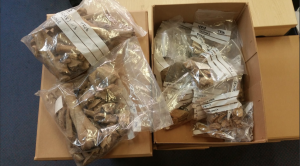 Fig.1 Assorted animal bones, including horse from Ipplepen, Devon
Fig.1 Assorted animal bones, including horse from Ipplepen, Devon
Animal bones are frequently recovered in large numbers from archaeological sites in Britain, often in refuse pits where the bones are the remains of food waste (Fig. 1). However, animal bones are also found as part of special deposits that could include animals which were given their own burials, animals included in human burials, or animals which were ritually deposited in other contexts. Understanding the context that remains are found in is an important first step for interpreting the roles of horse in the medieval period. While some burials of complete horse skeletons do exist, more often horse remains will be isolated elements as part of larger bone assemblages of many different species.
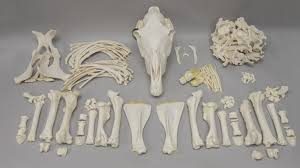
Fig.2 Disarticulated horse skeleton
For the Warhorse project, we will be using a combination of approaches to analyse these horse remains to integrate as many strands of evidence as possible for understanding the variation of medieval horses. We will begin by using traditional zooarchaeological techniques, which include taking a series of standardised measurements from the animal bones. These metrics will be used to provide evidence of size changes related to stature, including a detailed and systematic study of size, robusticity and shape, which could help us identify changes related to the increased use of horses in military activities. We will also record pathologies associated with working horses, such as spavin in the lower legs, back pathologies and bitting damage, to provide evidence for activities associated with military use/training.
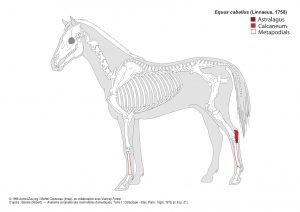
Fig.3 Anatomical drawing of horse skeleton, showing location of elements used for GMM
Alongside these traditional metric analyses, we will apply advanced 3D geometric morphometrics (GMM) to study variations in astragalus and calcaneus bones. These particular elements have been selected as they are easily identified within archaeological assemblages and tend to preserve very well in one piece, an essential criterion for 3D GMM. Because these elements are located in the limbs (Fig. 3), their morphological variation is likely to indicate during life changes related to locomotor requirement. These requirements would likely differ between horses used for military and domestic purposes. Digital 3D models will be created through a well-used method of structure-from-motion photogrammetry (Fig. 4), which is quick, inexpensive, and does not damage specimens. By combining both the traditional metrics with these more advanced GMM techniques, we will be able to generate a new, independent chronology of changing horse size, morphology and appearance which will increase our ability to detect husbandry practices and management strategies during the medieval period, and hopefully identify a unique horse morphology specific to horses used for military purposes.
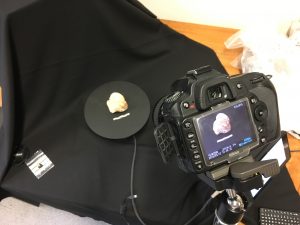
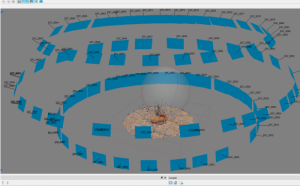
Fig.4 (top) Horse astragalus being photographed using photogrammetry, and (bottom), horse calcaneus during the modelling process.